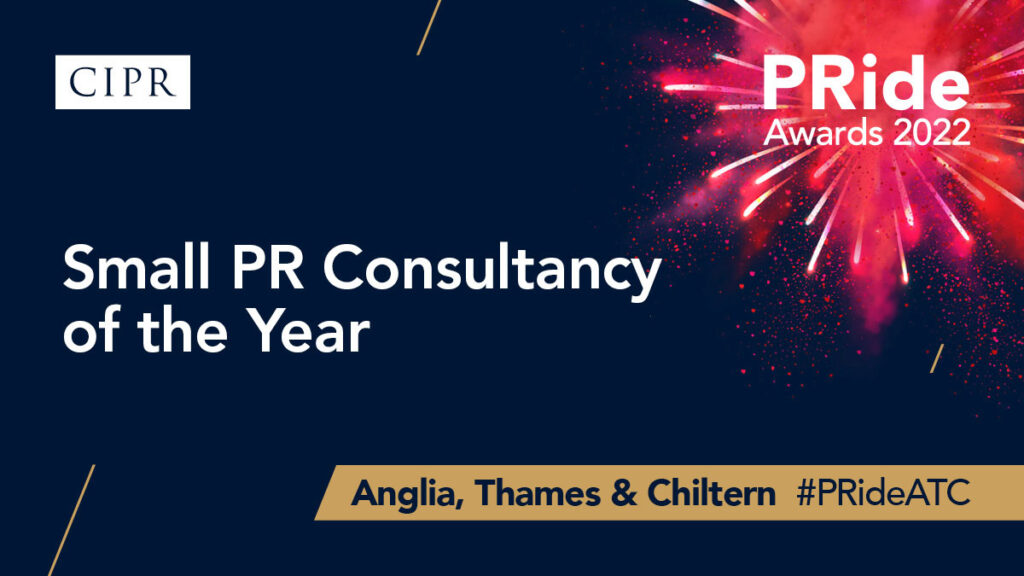In our world – that of brand reputation, relationship building and public perception – staying ahead of the curve is paramount. Here, our Managing Director Ellen Widdup takes a look at the shifts driven by technological advancements, societal changes, and emerging trends in the dynamic realm of PR.
One of our key roles as PR experts is to stay ahead of trends and understand what strategies are gaining traction, and which ones are losing relevance.
This is a vital component of building effective communication plans that can help us reach – and engage – with audiences in the right places at the right time.
So let’s dive into the trends shaping the PR landscape this year.
Hot: purpose-driven communication
In an age where consumers are increasingly socially conscious, purpose-driven communication is more important than ever. Brands that authentically align themselves with causes and values that resonate with their audience are gaining traction. Whether it’s environmental sustainability, social justice, or diversity and inclusion, PR strategies that champion purpose-driven initiatives are in high demand.
Not: greenwashing and tokenism
While purpose-driven communication is on the rise, greenwashing and tokenism are losing their appeal. Consumers are becoming more discerning and can see through superficial CSR initiatives that lack substance. PR efforts must be genuine and backed by concrete actions to make a meaningful impact.
Example: The global energy landscape has been undergoing a significant transformation, with an increasing focus on sustainability and decarbonisation. Amidst this shift, hydrogen has emerged as a promising alternative energy source, offering clean and versatile solutions across various sectors. At the forefront of this hydrogen revolution is the Hydrogen Energy Association (HEA), a dynamic organisation spearheading efforts to promote and advance the adoption of hydrogen energy technologies. Our comms strategy here has focused on advocacy and policy influence, collaborative partnerships, education and outreach, thought leadership and innovation and global engagement.
Hot: digital PR and influencer partnerships
Digital PR continues to dominate as online platforms evolve and shape consumer behaviour. Leveraging social media influencers and digital content creators can amplify brand messaging and reach new audiences. Authentic partnerships with influencers who align with a brand’s values can drive engagement and credibility in a crowded digital landscape.
Not: traditional media relations alone
Traditional media relations still hold value, but they’re no longer sufficient on their own. With the rise of social media and digital platforms, PR professionals must diversify their approach to encompass both traditional and digital channels. Integrated campaigns that leverage multiple touchpoints are essential for reaching today’s fragmented audiences.
Example: In an era where social media reigns supreme and digital communication is paramount, Fred. Olsen Cruise Lines has set sail on a journey that leverages influencers and digital channels to navigate the seas of marketing and customer engagement. With a keen eye on the horizon and a finger on the pulse of digital trends, Fred. Olsen Cruise Lines has established itself as a pioneer in utilising influencers and digital communications to reach new audiences and enhance the cruise experience. Our work here has included collaborating with travel influencers, humanising the brand through user-generated content, engaging through digital channels and leveraging technology to enhance the booking experience.
Hot: data-driven insights
Data-driven PR strategies are gaining momentum as advancements in analytics and technology provide deeper insights into audience behaviour and preferences. PR professionals are increasingly relying on data to inform decision-making, measure campaign effectiveness, and optimise messaging for maximum impact.
Not: spray-and-pray tactics
Gone are the days of spraying press releases to a broad audience and hoping for coverage. Today’s PR practitioners must be strategic and targeted in their approach, focusing on quality over quantity. Tailored pitches and personalised outreach are more likely to yield meaningful results than generic mass communication.
Example: In the realm of philanthropy, the impact of data-driven strategies cannot be overstated. For Will Aid, a pioneering charity will writing scheme, harnessing the power of data has become instrumental in driving our public relations actions. By leveraging data insights effectively – predominantly through a national poll – Will Aid not only enhances its outreach efforts but also maximises its ability to create positive change. Our work here has looked at understanding donor behaviour, personalising communications, constantly measuring campaign effectiveness through KPIs and building trust and transparency.
Hot: crisis preparedness and reputation management
With the rise of social media and the 24/7 news cycle, the risk of reputation-damaging crises is ever-present. PR professionals are prioritising crisis preparedness and reputation management, investing in robust crisis communication plans and real-time monitoring tools to detect and address issues before they escalate.
Not: reactive crisis management
Waiting until a crisis occurs to formulate a response is no longer an option. PR teams must be proactive in identifying potential risks and vulnerabilities, pre-emptively addressing them to safeguard brand reputation. Swift, transparent communication is key to mitigating the impact of crises and maintaining trust with stakeholders.
Example: In the unpredictable waters of the education sector, crises can arise unexpectedly, threatening the well-being of students, staff, and the reputation of educational institutions. In response to this reality, we devised the crisis comms strategy for the Diocese of Ely Multi-Academy Trust (DEMAT) charting a course towards proactive crisis management and equipping leaders with a robust plan designed to navigate stormy seas with efficiency and effectiveness. Our work included proactive risk assessment, clear comms protocols, training and drills, comprehensive response plans and a statement bank.
In conclusion, the PR landscape in 2024 is characterised by a shift towards purpose-driven branding, digital storytelling, influencer partnerships and proactive crisis management. To stay ahead in this rapidly evolving industry, businesses must embrace innovation, authenticity, and agility – and this is where we come in. Our work continues to elevate the brand communications of the businesses we work for – keeping them on track with key messages, channel optimisation and consistently evolving and flexing strategies to stay on top of opportunities.















